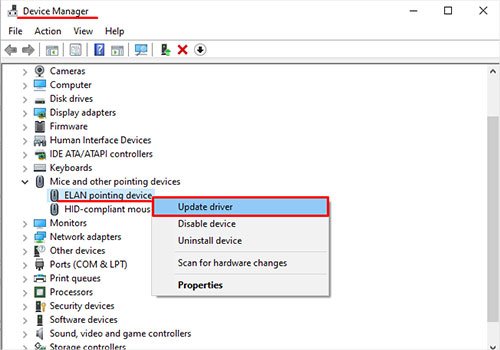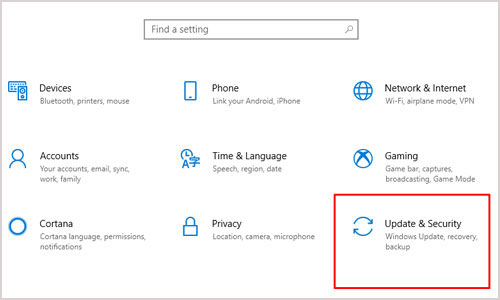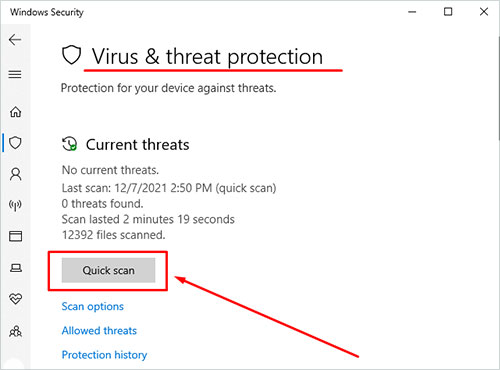How Mouse Movement Works
Most modern mice use a light or laser that touches the surface below. The light bounces back up, and a sensor interprets its movement. If your mouse is moving on its own, that light might be triggered by something, like damage or a mouse that’s too dirty to perform appropriately. However, the computer might also have a setting that’s incorrect and causing the input to appear to move on its own. Figuring out which problem is causing your issues is primarily a matter of trial and error. I always start troubleshooting by cleaning components when it can be done quickly. That way, even if it doesn’t work, I can do something useful that benefits my setup.
Dirt or debris on or in the mouse can affect how it works. The surface you’re using it on can create an issue. Problems with mouse settings on the computer can prevent the mouse from working correctly. The mouse may need to be replaced.
How to Fix Mouse is Moving On Its Own
When your mouse is moving on its own, fix a few potential problems and check all your settings. You’re likely to resolve the issue in this way.
Mouse maintenance
Do a few things before you start troubleshooting.If none of these fixes work, you can try some more complex fixes.
Clean the Mouse
The way you take your mouse apart will vary depending on what type you have. Some mice have removable sides or bases. They can feature different grips or button setups that you can remove and clean separately.Check your manual if you aren’t sure which parts of your mouse can be removed.It might seem intuitive to start using it right away. However, you should also clean or replace your mousepad while the mouse is drying.
Cleaning Your Mousepad
Before cleaning your mousepad, decide whether it’s worth the effort. Cloth mousepads especially get snagged and uneven over time. This can affect how well your mouse performs and might be contributing to the mouse moving on its own.If you have a hard mousepad, check whether the surface is smooth and even. If it is, wash it down with a cloth dampened with isopropyl alcohol. Let it dry before you use the mouse on it again.Also, you should make sure nothing is under the mousepad. You want a flat, even surface for the best possible performance.
Change Your Sensitivity
Sometimes the sensitivity is much higher than it should be, and even a light push can make the mouse move wildly – so that it appears to be moving on its own. Check your settings to make sure everything is set up right so that the mouse works.Try your mouse out for a little while and see whether or not it seems to be working. You can adjust your settings to make them comfortable for you and continue trying the mouse out until you’re on the proper settings. If you’re having trouble with the speed of your mouse, you can also adjust the DPI on Windows or in third-party programs.
Troubleshoot Your Hardware
There isn’t a mouse troubleshooter available, but you can still use the hardware troubleshooter to find, diagnose, and fix problems. An unknown error could be the cause of your mouse moving on its own.Sometimes a fix won’t even appear to be mouse-related. For example, you could have a driver or a USB port problem. Trying to fix these might fix the issues with your mouse without directly saying that it’s a mouse issue.
Update or Uninstall Drivers
If your drivers are out-of-date or incorrect, your mouse might experience issues with movement. Try to update your drivers first in case that solves the problem. If that doesn’t work, remove the driver and see whether a freshly installed driver makes it work correctly.If that doesn’t work, delete your mouse driver and let Windows reinstall it. It should detect that new hardware was plugged in and find the correct drivers.You can also find the drivers from your mouse’s manufacturer. Save them on your computer. Install them by doing the same process to update the driver but choose to browse your computer for drivers.
Remove Conflicting Devices
If you power down your computer, remove all the peripheral devices that aren’t necessary, and then try to use your mouse. Put the other devices back in one at a time after seeing that the mouse works. You might be able to pinpoint which is creating the issue.Consider removing:
Game controllersJoysticksOther miceExternal hard drives
Any extra device attached to your computer can cause conflicts. Removing them will help reduce the chances of this.
Disable the Touchpad
If you’re using a laptop with an external mouse with issues, try disabling the touchpad. Sometimes touching that part of the laptop will move whatever the mouse is controlling and make it seem the mouse is moving when it isn’t.
Run a Virus Scan
If nothing else has worked, scan your computer for viruses to see whether malware is the root of your problem.Even if the virus scan finds nothing, you might want to have your computer checked by a professional. It’s essential to be sure that your operating system is stable and that the computer isn’t being targeted by some kind of scam, like someone accessing it remotely. Remember, if you suspect anyone is accessing your computer remotely and using the mouse movement to keep it from falling asleep, address it immediately. You need to back up your data, wipe your hard drive, and install a fresh copy of your operating system.Finally, one of the simplest ways to see whether your mouse or computer is causing the problem is to plug in a different mouse with the same type of connection. If the issue disappears and reappears when you reinstall the last mouse, you probably have a mouse issue.










